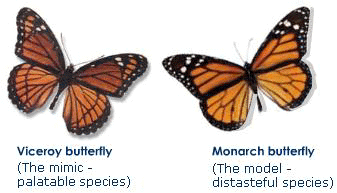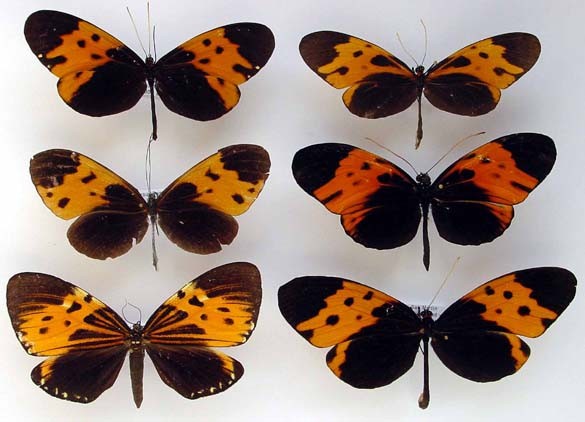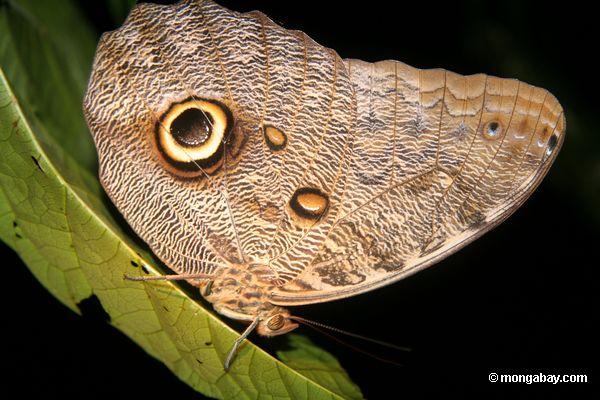Chick that mimics a caterpillar
This weeks blog is going to be on a very interesting example of Batesian mimicry taken from the Peruvian rain forest, the Amazon. This is an area with high nest predation (Londoño et al 2015). Therefore extreme types of evolution has occurred. The species Laniocera hypopyrra looks like a normal bird, however its young are completely different.

Figure 1: This is the adult Laniocera hypopyrra bird. Photo by Sylvian Uriot taken from http://featuredcreature.com/bizarre-baby-bird-mimics-toxic-caterpillar-escape-predation/.
The picture below appears to be a poisonous caterpillar from the family Magalopygidae. This species is even known to be deadly for humans (if they ingest the caterpillar). However it is the L.hypopyrra chick. The chick moves and looks like a caterpillar. It moves its head from side to side around a week after it is hatched(Londoño et al 2015). This movement appears to be the same as the caterpillar. which deceives any possible predators including various different species of monkey and snakes (Londoño et al 2015). Figure 3 shows the actual toxic caterpillar. The appearance is remarkably similar.
The bright colouration is extremely conspicuous and therefore in any other circumstance the bird would be eaten easily as it would be seen by predators. The bright orange colour does not blend in with the surrounding rain forest foliage. This is the chicks only form of defense against predation. The young birds are weak and blind.Therefore the Batesian mimicry must be the cause for this colouration.(Londoño et al 2015)

Figure 2: Laniocera hypopyrra chick which mimics a toxic catterpillar. Photo taken by Santiago David-Rivera taken from http://www.newscientist.com/article/dn26689-zoologger-the-bird-that-mimics-a-toxic-caterpillar.html#.VRfKy_nF-8A.

Figure 3: Magalopygidae catterpillar. Photo taken by unknown, taken from http://www.ttnaturelink.com/ttnaturetrips/tale-forests
Next week I will talk about the counter evolutionary strategies of these Predators and prey that I have blogged about. I will talk about how the deceived species respond to the mimicry.
References
Featured Creature, (2014). Bizarre Baby Bird Mimics a Toxic Caterpillar To Escape Predation | Featured Creature. [online] Available at: http://featuredcreature.com/bizarre-baby-bird-mimics-toxic-caterpillar-escape-predation/ [Accessed 29 Mar. 2015].
Londoño, G., García, D. and Sánchez Martínez, M. (2015). Morphological and Behavioral Evidence of Batesian Mimicry in Nestlings of a Lowland Amazonian Bird. The American Naturalist, 185(1), pp.135-141.
Newscientist.com, (2015). Zoologger: The bird that mimics a toxic caterpillar - life - 11 December 2014 - New Scientist. [online] Available at: http://www.newscientist.com/article/dn26689-zoologger-the-bird-that-mimics-a-toxic-caterpillar.html#.VRfKy_nF-8A [Accessed 29 Mar. 2015].






